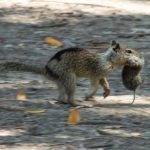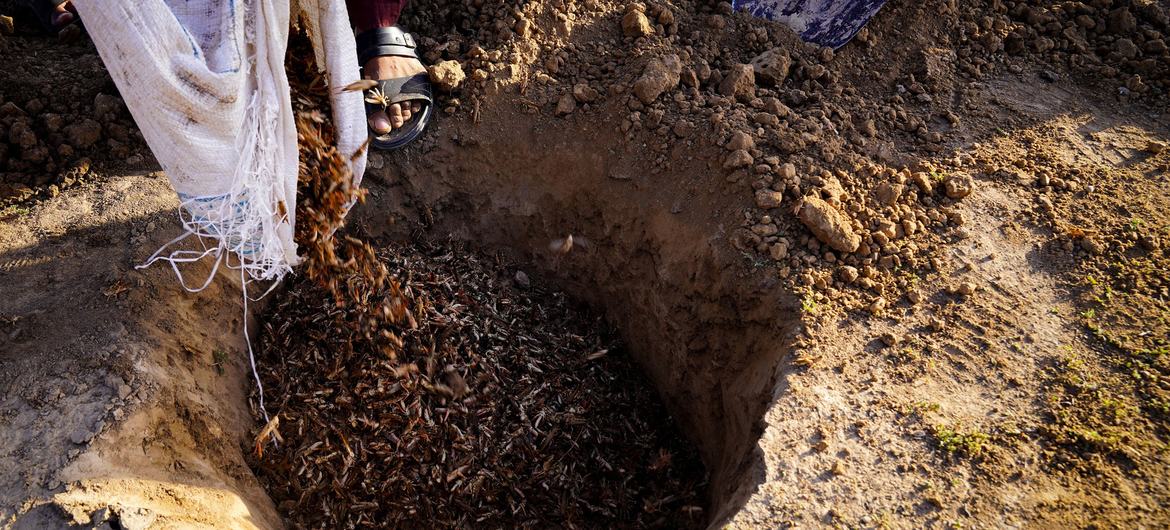The Food and Agriculture Organization of the United Nations (FAO) has warned this Wednesday of a large-scale outbreak of Moroccan locust in eight provinces in the north and northeast of Afghanistan, the country’s most important wheat production and reserve area.
“Reports of the Moroccan locust outbreak in this area of Afghanistan are of great concern. The Moroccan locust feeds on more than 150 plant species, including tree crops, grasses and 50 food crops, all of which grow in Afghanistan. represents a enormous threat to peasants, communities and the entire country“, assured the representative of the Organization in Afghanistan.
“The last two big outbreaks, 20 and 40 years ago, cost Afghanistan around 8 and 25% of its total annual wheat production. Crop forecasts for this year are the best we have seen in the last three years, but this outbreak threatens to destroy all these recent gains and dramatically worsen the situation of food insecurity later this year and into the next,” added Richard Trenchard.
The Moroccan locust is one of the most damaging plant pests for the economy around the world. A full outbreak this year could cause crop losses that would oscillate between 700,000 and 1.2 million metric tons of wheat, up to a quarter of the total annual harvest. This translates into economic losses of between 280 and 480 million dollars, according to current prices in the country.
perfect conditions
The northern and northeastern regions of Afghanistan are prone to Moroccan locust outbreaks. This year the “perfect” conditions have been given for one to take place: Drought, overgrazing, very limited locust control, and just the right amount of rainfall in March and April for locusts (approximately 100mm). These conditions created the ideal environment for them to hatch and swarm.
In these areas of Afghanistan, the Moroccan locust lays eggs between May and June, depending on environmental conditions, in hilly and grassy areas. The young locusts hatch the following year, at the end of March, and begin to feed on the surrounding grasses. This year, hatching started earlier than usual.
“The alarm sounded late, but FAO, its partner NGOs, communities and local authorities jumped into action immediately,” Trenchard said. “Supplies of chemicals were in short supply across the country, so we were forced to focus on traditional methods of mechanical fight to reduce the impact of the outbreak“.
The representative explained that thousands of people in the communities of the affected provinces have been working day and night to eliminate the locusts before they become adults and can fly and form swarms.
“We have used our cash-for-work methodology to put money in the pockets of the farmers most at risk, while accelerating the mechanical fight in communities in the North and Northeast regions. We have also seen a strong, rapid response and encouraging from the Ministry of Agriculture, Irrigation and Livestock, although its response capacity is greatly limited by the lack of resourcesTrenchard added.
Moroccan lobsters are dumped into a pit during a mechanical check in Baghlan, Afghanistan.
Threat to food security in Afghanistan… and beyond
Normally, in these outbreaks, after decimating the pastures, large bands of locusts and swarms of adults move into the cultivation areas and eat dry and irrigated wheat and other crops. There is not a single crop that is safe from the damage of the Moroccan locust.
If the Moroccan lobster population is left untreated, their numbers could multiply by 100 in the next year, creating even greater problems for agriculture and food security of Afghanistan and its neighbours.
“Chemical control methods are much more effective than mechanical control. Afghanistan used to have a very strong locust control system. But in the last two years it has been badly eroded. At this point, all we can hope for is that mechanical control methods will reduce the global impact of locust swarms. But we must start now to prevent even larger outbreaks in 2024, a very real threat going forward,” the representative said.
To respond to this threat, the Organization urgently requests funds to finance mechanical and chemical control measures, as well as field surveys to monitor and locate locust hatching sites.





![[Img #74678]](https://thelatestnews.world/wp-content/uploads/2024/12/See-schizophrenia-and-bipolar-disorder-in-face-shape-150x150.jpg)





